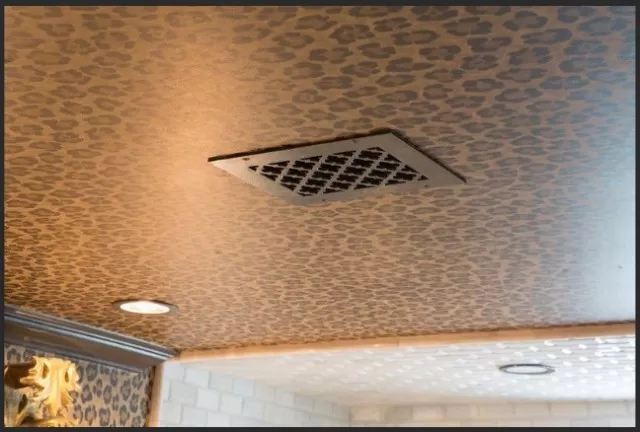Neglected Areas: The Dirty Dozen for Cleaning.Believing your home is spick and span? It might be time to reconsider! Even the most diligent housekeepers tend to overlook certain areas that hide dirt, dust, and germs in plain sight.
Don’t worry, you’re in good company. According to a 2012 Kenmore-sponsored survey, a staggering 49 percent of Americans admit to taking shortcuts while cleaning, leaving nooks and crannies untouched. Many of us only clean when visible dirt becomes impossible to ignore, allowing “dirty little secrets” to accumulate.
Acknowledging the issue is the vital first step towards a cleaner home. Uncover these often-forgotten corners and arm yourself with the knowledge to tackle them effectively. From the depths under your furniture to the hidden spaces behind it, these areas need your attention too. You’re not alone if you’ve been ignoring them, but now’s the time to take action. So, let’s dive into some of the commonly missed spots that deserve a place in your cleaning routine, along with some handy tips to make your cleaning endeavors more efficient. By addressing these often-neglected spaces, you’ll be well on your way to a truly thorough and refreshing clean for your living environment.
Beneath and Hiding Behind Household Furnishings

While vacuuming undoubtedly plays a crucial role in your regular cleaning regimen, by investing a touch more time and energy, you have the opportunity to banish a significant amount of lingering dust and stubborn grime.
The inclusion of a low-profile vacuum in your cleaning arsenal can unlock the potential to access the concealed spaces beneath a majority of your furniture items. To delve even deeper into those elusive nooks and crannies, equipping yourself with extension wands and specialized brush attachments proves to be a strategic choice.
These attachments empower you to conquer the most elusive corners and crevices, which would otherwise remain untouched by a conventional cleaning approach. Therefore, by embracing these enhancements to your cleaning routine, you can ensure a home that truly sparkles from every angle, leaving no stone unturned and no speck of dust unchecked.
Sealing Strips on Refrigerator Doors
A common feature among household appliances, flexible rubber gaskets encircle the edges of refrigerator doors, fulfilling the essential role of maintaining an airtight seal.
However, over time, these gaskets tend to accumulate a medley of undesirable elements, including dust, dirt, grease, and even moisture. Fortunately, tending to this aspect of maintenance requires nothing more than a few moments of your time and a simple cleaning solution.
Crafted from a blend of one cup of vinegar and three cups of water, this homemade cleaning elixir possesses the remarkable ability to dissolve grime and cut through various deposits that cling to the gaskets.
With a swift spray of this solution, generously coat the gasket’s surface, allowing its natural acidic properties to break down the accumulated residues. A gentle yet deliberate wipe using a soft cloth follows, resulting in the removal of the loosened dirt.
To conclude this process, a final pass with plain water ensures the elimination of any remaining traces of the cleaning solution.
This step is pivotal, as it not only rinses away the cleaning agents but also leaves behind a fresh, clean scent. By attending to the often-overlooked refrigerator gaskets in this manner, you’re not only enhancing the appliance’s overall cleanliness but also extending its lifespan and ensuring the maintenance of a sanitary food storage environment for you and your family.
Upper Surfaces of Doors and Windows

The upper regions of doors and windows frequently become unsuspecting hosts to substantial gatherings of dust and dirt particles.
Combatting this issue requires adopting a simple yet effective approach to maintain the cleanliness and aesthetics of your living spaces.
Incorporating a routine ritual of dust management can significantly mitigate the accumulation of unwanted particles.
Employing the gentle touch of a microfiber or feather duster, a swift sweep across these elevated surfaces is all it takes to curtail the buildup of dust. This proactive measure not only keeps your surroundings looking cleaner but also reduces the potential for allergens and irritants to disperse throughout your home.
For a more comprehensive and thorough cleanse, dedicating a few moments on a regular monthly or quarterly basis is highly beneficial.
Armed with a soft cloth and a reservoir of plain water, embark on a gentle wiping mission to restore the brilliance of these overhead areas. As the cloth glides across the surfaces, it effortlessly lifts away any residual dust and impurities, leaving behind a revitalized and sparkling appearance.
Beyond the cosmetic advantages, this practice contributes to the overall maintenance of a healthier indoor environment by preventing dust from descending onto your living spaces.
Embracing these uncomplicated measures ensures that even the often-neglected tops of doors and windows radiate with cleanliness, enhancing the overall charm and hygiene of your home.
Seldom-Utilized Cookware and Culinary Vessels
In the realm of kitchen management, pot racks shine as exceptional instruments for maintaining order and arrangement.
However, it’s crucial to recognize that these fixtures can unwittingly become a repository for not just culinary tools but also airborne grease particles, forming a base for the accumulation of dust. To counter this, a prudent approach is to address the upkeep of both infrequently employed pots and pans, as well as the rack housing them.
A biannual schedule serves as a suitable cadence for this maintenance endeavor.
At intervals of around every six months, set aside a moment to execute a simple yet impactful ritual. Begin by removing both the underutilized culinary vessels and the pot rack itself from their customary positions.
This initial step allows for unobstructed access to the entirety of the items and their surrounding areas.
The next phase involves a transformative dunking session.
Submerge the less-frequented pots and pans in a basin of hot, soapy water. This therapeutic soak not only aids in loosening accumulated residues but also contributes to the revitalization of the cookware’s surfaces.
Simultaneously, the pot rack itself should undergo a similar treatment, as the combination of grease and dust can diminish its aesthetic and functional value.
Following the invigorating soak, dedicate a moment to gently cleanse the submerged items using a soft cloth or sponge.
This action effectively sweeps away the loosened particles, revealing the gleaming surfaces underneath. Upon the completion of this task, the revitalized pots, pans, and pot rack can be returned to their original locations.
By integrating this practice into your culinary landscape, you ensure that even the less-heralded elements of your kitchen remain primed for performance and visually appealing.
The biannual cleansing ceremony not only safeguards the quality of your kitchen tools but also contributes to the overall orderliness and cleanliness of your cooking environment.
Interior Heating Vents and Registers

A common feature in numerous households, heating vents and registers are discreetly nestled in the floors or strategically placed along the baseboards.
While they play a pivotal role in distributing warmth throughout the abode, they also unwittingly serve as catchers for a medley of particles—dust, hair, and dirt. When the heating system is activated, these accumulated elements are propelled into the air, circulating throughout the living spaces.
To combat this cycle and promote a cleaner indoor atmosphere, adhering to a routine cleaning regimen is key.
Initiating this process necessitates a few straightforward steps that can dramatically impact your home’s Air Quality.
First and foremost, undertake the careful removal of the register cover. This action unveils the interior of the vent, allowing for direct access to the debris that may have amassed over time.
Employing the adept assistance of a vacuum cleaner equipped with an appropriate attachment, embark on a thorough suctioning mission.
Maneuver the attachment within the vent to systematically extract dust, hair, and dirt from its recesses. This meticulous vacuuming not only rids the vent of pollutants but also prevents them from dispersing into the living areas when the heating system is activated.
Following the vacuuming phase, usher in a moment of rejuvenation.
Armed with a moist towel, meticulously wipe down the interior surfaces of the vent. This gentle yet effective cleansing approach removes any residual particles that may have clung stubbornly during the vacuuming process.
The outcome is a vent that stands revitalized and ready to efficiently contribute to your home’s comfort.
By incorporating this cleansing ritual into your household maintenance routine, you actively curtail the circulation of airborne irritants, fostering an environment that promotes well-being and comfort.
The combined actions of vacuuming and wiping down the vents not only enhance the efficiency of your heating system but also underscore your commitment to a cleaner and healthier living space.
*The information is for reference only.